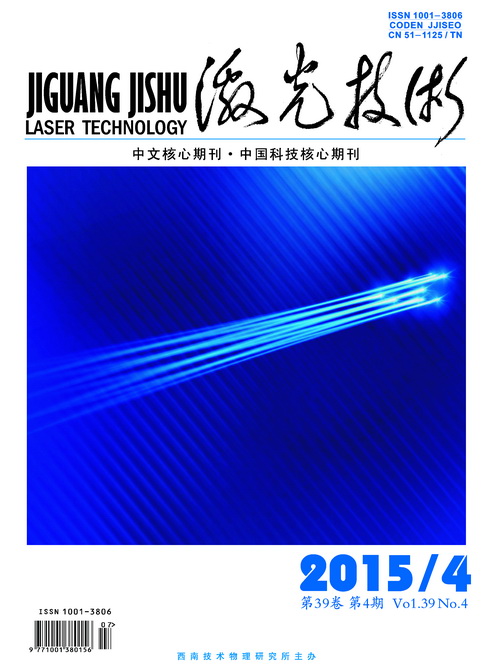|
[1]
|
CHEN Q S , MENG Z F. The development of the detection of lead in water [J].Studies of Trace Elements and Healt,2008,25(3):66-68(in Chinese). |
|
[2]
|
DONG Y L.Chemical precipitation-microfiltration process for treatment of wastewater containing lead[D].Tianjin:Tianjin University,2004:18-38(in Chinese). |
|
[3]
|
CREMERS D A, RADZIEMSKI L J.Handbook of laser induced breakdown spectroscopy(LIBS)[M] .Cambridge,UK :Cambridge University Press,2006:1-15. |
|
[4]
|
ROSENWASSER S, ASIMELLIS G, BROMLEY B, et al . Development of a method for automated quantitative analysis of ores using LIBS[J].Spectrochimica Acta,2001,B56(4):707-714. |
|
[5]
|
LI J, LU J D, LIN Z X, et al. Experimental analysis of spectra of metallic elements in solid samples by laser-induced breakdown spectroscopy[J].Chinese Journal of Lasers,2009,36(11):2882-2887(in Chinese). |
|
[6]
|
ANGLOS D. Laser induced breakdown spectroscopy in art and archaeology[J].Applied Spectroscopy,2001,55(6):186A-205A. |
|
[7]
|
WANG J S, QIAO D P, LU Y Z, et al. Quantitative analysis of laser-induced breakdown spectroscopy in rocks by using intensity normalization method.Chinese Journal of Lasers,2010,37(1):225-230(in Chinese). |
|
[8]
|
DONG M R, LU J D, LI J, et al.Propertities of laser-induced breakdown spectroscopy between liquid steel and solid steel[J].Acta Optica Sinica,2011,31(1):0130002(in Chinese). |
|
[9]
|
KRAUSHAAR M, NOLL R, SCHMITZ H U.Slag analysis with laser-induced breakdown spectrometry[J]. Applied Spectroscopy,2003,57(10): 1282-1287. |
|
[10]
|
HYBL J D, LITHGOW G A, BUCKLEY S G. Laser-induced breakdown spectroscopy detection and classification of biological aerosols[J]. Applied Spectroscopy, 2003,57(10): 1207-1215. |
|
[11]
|
WHITEHOUSE A I, YOUNG J, BOTHEROYD I M, et al.Remote material analysis of nuclear power station steam generator tubes by laser-induced breakdown spectroscopy[J]. Spectrochimica Acta, 2001,B56(6):821-830. |
|
[12]
|
KNIGHT A K, SCHERBARTH N L, CREMERS D A, et al. Characterization of laser-induced breakdown spectroscopy (LIBS) for application to space exploration[J]. Applied Spectroscopy, 2000, 54(3): 331-340. |
|
[13]
|
LU C P,LIU W Q,ZHAO N J,et al.Measurement and analysis of lead in soil using laser-induced breakdown spectroscopy[J].Laser Optoelectronics Progress,2011(5):053002(in Chinese). |
|
[14]
|
WANG C L,LIU J G,ZHAO N J,et al.Enrichment of trace lead in water with graphit and measurement by laser-induced breakdown spectroscopy[J].Chinese Journal of Lasers,2011,38(11):1115002(in Chinese). |
|
[15]
|
RAI N K, RAI A K. LIBS-an efficient approach for the determination of Cr in industrial wastewater[J]. Journal of Hazardous Materials, 2008,150(3):835-838. |
|
[16]
|
WANG Y, ZHAO N J, MA M J,et al.Chromium detection in water enriched with graphite based on laser-induced breakdown spectroscopy[J].Laser Technology,2013,37(6):808-811(in Chinese). |
|
[17]
|
LAZZARI C,ROSA M D,RASTELLI S, et al. Detection of mercury in air by time resolved laser-induced breakdown spectroscopy technique[J]. Laser and Particle Beams,1994,12(3):525-530. |
|
[18]
|
LAZIC V, BARBINI R, COLAO F, et al.Self-absorption model in quantitative laser induced breakdown spectroscopy measurements on soils and sediments[J]. Spectrochimica Acta,2001,B56(6):807-820. |

 Map
Map



 DownLoad:
DownLoad: